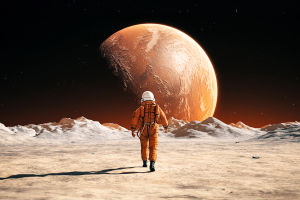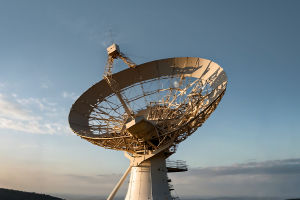When we think about our solar system, we usually count eight planets: Mercury, Venus, Earth, Mars, Jupiter, Saturn, Uranus, and Neptune.
This arrangement was solidified back in 2006 when the International Astronomical Union decided to reclassify Pluto as a "dwarf planet," reducing the number of planets from nine to eight.
However, recent scientific discoveries have left us questioning whether there might still be another planet lurking at the edge of our solar system. Could there be a mysterious ninth planet?
The Search for the Ninth Planet: A Look Back in History
Our fascination with a possible ninth planet isn't new. The idea was first seriously considered back in the 19th century by Percival Lowell, a wealthy American businessman and astronomer. After reading a book called Mars by Frédéric J. Chasles, Lowell became obsessed with the idea of life on Mars and began dedicating his wealth and time to studying the planet. He even built an observatory—the Lowell Observatory—to study Mars and other celestial bodies.
While Lowell is best known for his belief in "Martians," he also theorized that a mysterious planet, known as "Planet X," was the reason why the orbits of Uranus and Neptune seemed a bit off. Despite his extensive research, Lowell never found the planet before he passed away. It wasn't until 14 years after his death that scientists discovered Pluto, which at the time, seemed to be the elusive Planet X. However, further study revealed that Pluto wasn't large enough to influence the orbits of the outer planets as Lowell had speculated.
The Mysterious Ninth Planet: A Super-Earth or Something Else?
Fast forward to the present day, and the mystery of the ninth planet has resurfaced. Scientists now speculate that the elusive ninth planet might be a "super-Earth," a type of planet that is at least twice the size of Earth. While there's still no direct evidence of such a planet, the idea has gained traction because of strange gravitational effects observed in the outer reaches of our solar system.
Unusual Phenomena at the Edge of Our Solar System
In 2016, astronomer Mike Brown and his team observed that six objects in the Kuiper Belt—an area beyond Neptune filled with icy bodies—had unusual orbits. These objects moved in similar ways, all having the same tilt and pointing in similar directions toward the Sun. The chances of this happening by chance were less than 1%. The theory is that a large, unseen object—possibly the hypothetical ninth planet—is influencing the orbits of these distant objects with its gravity.
Could the Ninth Planet Really Be That Big?
According to scientists, the hypothetical ninth planet could be about 4,500 times the mass of Pluto, which would make it roughly ten times the mass of Earth. This immense mass could explain the strange orbital patterns observed in the Kuiper Belt. It's possible that this planet is a giant ice world, similar in composition to Uranus and Neptune, made of a mix of rock, ice, and gas.
Why Haven't We Found It Yet?
Despite these tantalizing clues, no one has been able to locate this ninth planet yet. Brown and other astronomers believe that if the planet does exist, it may be located far beyond the reach of our current telescopes, possibly at the very edge of our solar system. Because of the planet's distance from us, it would take a spacecraft about 20 years to reach it, even with advanced technology.
What Are the Alternatives to the Ninth Planet Theory?
Some scientists argue that the mysterious effects observed in the outer solar system could be explained by something other than a planet. One alternative theory suggests that the effects might be caused by primordial black holes—tiny, invisible objects that formed shortly after the Big Burst. These black holes could have a mass similar to that of a small planet and might explain the gravitational anomalies.
The Search Continues
No matter the theory, the search for the ninth planet has reshaped our understanding of the solar system. Whether it's a planet, a black hole, or something else entirely, one thing is certain: there is still much to learn about the farthest reaches of our cosmic neighborhood. For now, the mystery remains, and we are left with more questions than answers.
Conclusion: The Journey Is Just Beginning
As we continue to explore the edges of our solar system, Lykkers, it's clear that we still have much to discover. Whether or not the ninth planet exists remains a subject of heated debate, but one thing is for sure: our curiosity about the universe is endless. Stay tuned, because the hunt for answers is far from over!


